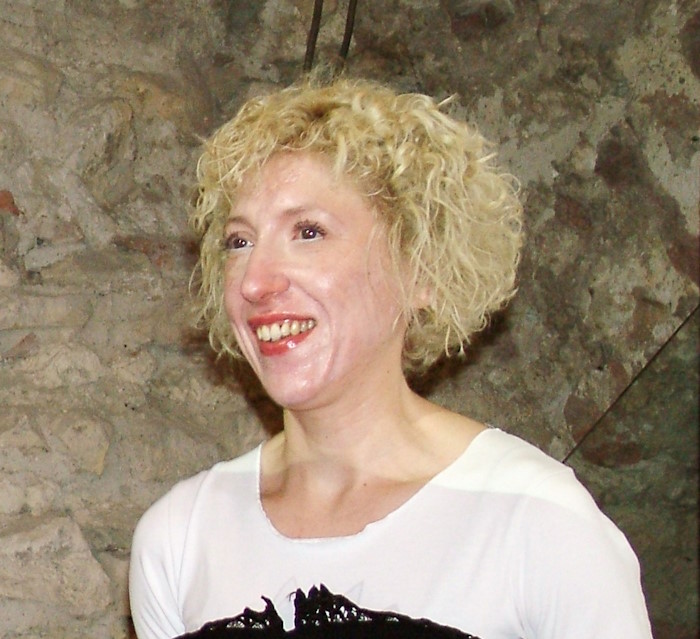Professor Andjelka B. Kovačević
Andjelka B. Kovačević, Ph.D. is Associate Professor in the Department of Astronomy, Faculty of Mathematics at the University of Belgrade and the President of the National Committee for Astronomy in Serbia.
Andjelka lectures on the Practical analysis of noisy and uneven time series and Big Data in space science and its analysis with her research focus on signal mining from red noise. Read Two-Dimensional Correlation Analysis of Periodicity in Noisy Series: Case of VLF Signal Amplitude Variations in the Time Vicinity of an Earthquake.
Andjelka’s primary research interest is currently in the Space Telescope and Optical Reverberation Mapping Program, particularly in active galactic nuclei or AGNs and in the Rubin Observatory Legacy Survey of Space and Time (LSST) and the use of Deep Learning and Machine Learning approaches for AGN selection and characterization in large surveys like LSST.
Reverberation mapping is a technique used by astronomers to study the regions surrounding supermassive black holes in active galactic nuclei (AGNs). It focuses on the analysis of light fluctuations emitted by these regions to gain insights into their structure, size, and dynamics. Read AGN STORM 2: V. Anomalous Behavior of the CIV Light Curve in Mrk 817, AGN STORM 2. IV. Swift X-Ray and Ultraviolet/Optical Monitoring of Mrk 817, and AGN STORM 2. III. A NICER View of the Variable X-Ray Obscurer in Mrk 817.
The Vera C. Rubin Observatory Legacy Survey of Space and Time (LSST) is a groundbreaking astronomical survey designed to map the entire visible sky every few nights. One of the main goals of the LSST is to create a detailed and dynamic map of the universe, cataloging transient events like supernovae, variable stars, and potentially hazardous asteroids. Additionally, it aims to study dark matter and dark energy, understand the properties of asteroids in our solar system, and provide invaluable data for various areas of astrophysics.
Andjelka is researching the use of different methods to help understand the vast amount of data that will be collected with LSST, from Conditional Neural Processes (CNPs) to Deep Learning methods.
Read The LSST AGN Data Challenge: Selection Methods, Conditional Neural Process for Nonparametric modeling of Active Galactic Nuclei light curves, Deep Learning of Quasar lightcurves in the LSST era, The LSST Era of Supermassive Black Hole Accretion Disk Reverberation Mapping, and Photoreverberation mapping of quasars in the context of Legacy Survey of Space and Time observing strategies.
In 2024, Andjelka was Invited Speaker at the KAVLI-IAU Symposium: (Toward) Discovery of Life Beyond Earth and its Impact discussing the Search for Life Beyond Earth, which raises complex questions of policy, law, philosophy, and theology. Bringing together diverse expertise to plan how we will assess evidence and communicate what we know (and don’t know) with the public. Read On possible life-dispersal patterns beyond the Earth.
Andjelka joined the Department of Astronomy, Faculty of Mathematics at the University of Belgrade in 1998 as a Junior Teaching Assistant. Between 2017 and 2020, she was the Head of the Department of Astronomy.
In 2019, Andjelka was the PI for the project SUPERAST – Supercomputing Astronomy which was focused on using innovation and development of new curricula of supercomputing astronomy to apply scientific simulations and methods of big data analysis. This was a project funded by the Ministry of Education, Science, and Technological Development of the Republic of Serbia within the call “Development of Higher Education”, through which a small computer cluster was obtained for the Department. Read Realization of the SUPERAST project.
Starting from the school year 2011/2012, the University of Belgrade together with 4 other institutions (Institute of Astro- and Particle Physics, University of Innsbruck, Austria; Department of Astronomy, University of Padua, Italy; Astrophysics Section/Department of Physics, University of Rome “Tor Vergata”, Italy; Institute for Astrophysics, Department of Astronomy, University of Gottingen, Germany) participated in the international Erasmus Mundus two-year master program named Astromundus. Andjelka was part of the staff that realized the project. The program officially ended in January 2020.
In the summer of 2018, Serbia became a member of the Board of Directors of the Astronomy & Astrophysics (A&A) journal. According to the contract, all astronomers who have an affiliation with Serbia can publish their works in A&A free of charge. Andjelka is the first representative of Serbia on the Board of Directors.
As Professor in the Department, Andjelka is also a member of the International Astronomical Union (IAU) and actively participates in its commissions.
Andjelka was the president of the Local Organising Committee (LOC) at the XVII National Astronomical Conference in 2014 and the president of the Scientific Organising Committee (SOC) at the XIX National Astronomical Conference in 2020.
In 2007 and 2008, she was the president of LOC at the 1st International Summer School in Astronomy and Geophysics and the 2nd International Summer School in Astronomy, and in 2010 a president of SOC and president of LOC at the 3rd International School in Astronomy: Astroinformatics – Virtual Observatory.
Andjelka earned her Ph.D. from the University of Belgrade in 2005 with her doctoral dissertation Gravitational influences of small planets and determination of their masses. She followed by publishing a Professional monograph On the determination of asteroid masses.
In 2016, Andjelka authored and illustrated the textbook Astrobiologija.
She was the co-organizer of the XII Serbian – Bulgarian Astronomical Conference 2020. Read Department of Astronomy at the Faculty of Mathematics University of Belgrade in the Period 1999–2020.
Read Two-dimensional correlation analysis of periodicity in active galactic nuclei time series, Determination of Ceres mass based on the most gravitationally efficient close encounters, and Detecting Long-period Variability in the SDSS Stripe 82 Standards Catalog.
Visit her LinkedIn profile, ORCiD profile, Loop page, iNSPIRE HEP page, and ResearchGate page. Follow her on E-CRIS and COBISS.
